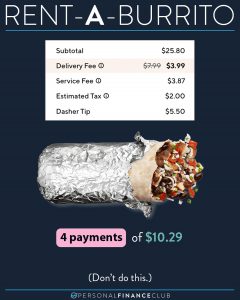
Fees are these tricky little guys. They hide all over the place, then can erode half of the value of your investment. These two charts show the devastating effect of fees compounded over many years of investment.
On the left is a typical index fund with a very low expense ratio of 0.04%. Compounded over 40 years, the fees eat away about 1.4% of the total potential value, leaving the investor with $446,056.
On the right is an example of a mutual fund bought through a financial advisor. The financial advisor often has a incentive to recommend a high fee fund and may charge a sales load (transaction fee) as well. The total 2% fee doesn’t sound terrible, but compounded over 40 years it erodes 52% of the potential growth, leaving the investor with less than half, $217,245.
So when you invest, make sure to be aware of what fees you’re paying! Here’s the main two places to look for them:
• Your statement. Fees charged by your brokerage or financial advisor should appear there. They could be monthly, quarterly, annually, or charged when you make a transaction (called a “load”).
• Your investment. Fees can also be charged “internally” to your investment. For example, if I google the ticker symbol WFTCX, Google shows me right on the results page it has an “expense ratio” just under 2%. That means, internal to the investment, they drain almost 2% of the value each year into their own pockets. This doesn’t appear on your statement as a fee as it’s reflected in the share price and value of the investment! There are MANY funds just like this.
Studies have shown that the ONLY predictive way to increase future returns when picking investments is to minimize fees. So be aware of them! :)
As always, reminding you to build wealth by following the two PFC rules: 1.) Live below your means and 2.) Invest early and often.
– Jeremy

 September Sale!
September Sale! 



